A bit more than midway through Delhi 6 the enchanting Dil Gira Dafatan song begins. Without risking hyperbole one might instantly characterize this as one of the great music videos in Hindi film history. It is the most moving segment in Delhi 6, perhaps the only one inasmuch as the rest of the film is by design not meant to be cathartic or one that insists on a strong emotional response from the viewer. This video distills all of the film's major themes into a series of poetic visuals that have the quality of reverie. Rakeysh Mehra compresses 'time present and time past' into the logic of a dream and gives us the essential hinge points of the narrative. The split psychic life of the 'immigrant' who merges his two realities into one 'frame', the tensions between the modern and the pre-modern, the related highlighting of two senses of 'speed' and movement, the delicacy of romance, and finally a trope for cinema that skilfully connects with the film's central symbol.
The central protagonist Roshan wakes up, turns around and looks onto the Statue of Liberty in the heart of old Delhi. He then walks through a portal and steps out into a place resembling Times Square but which also in somewhat surreal fashion incorporates the 'quiddities' of Delhi (and Indian) life. Delhi transposed to New York. Cars race with cycle rickshaws, a bullock cart blends with a NY policeman on a horse, a tree with religious significance finds itself uprooted from its old world and happily attracts attention in the 'new'. At one point Roshan seems to run but falls behind everyone else around him. A watercolor portrait betraying technological imagery is revealed, Roshan looks at it and then onto his lover posing for this painting. Eventually the lovers are enveloped by this artistic conceit and becomes extensions of the imagined world. One of the most iconic moments from movie history is then referenced when Roshan soars above everyone else in a plane and the symbolic figure of King Kong is revealed.
The entire juxtaposition of elements in the video is nothing short of intoxicating. For all this it also remains an interestingly enigmatic moment in a film that is not less mysterious. Rakesh Mehra has essentially crafted an anti-drama that for the first half operates in semi-documentary fashion with vignettes that are linked together rhythmically far more than by the exigencies of a 'plot'. The story-telling upto this point is really lateral. The second portion of the film then expands the always ever present crisis of the story and by necessity becomes a bit more 'linear'. But the director also does something more fascinating in this section. He turns the film inside out. What remains below the surface in the first half or just hinted at is brought to the fore. Even as the 'political' takes center stage seemingly by way of a detour not intrinsic to the presentation of the first half it is really but the other side of the 'mirror' (or even an image in inverted form). The 'political' is never absent from the film. It is subtly hinted at by way of characters, rituals, community, the chaos and bluster of old Delhi life but also the city's silences, the moodiness of its 'old city' architecture, the ellipses that occur between those narrative fragments. The film therefore involves a 'turn' in the second half which is always meant to be. In another one of the film's central tropes this is the reflection staring back. The gaze of the viewer is directed from the outside to the inside or once again the image is inverted. One has been outside looking in and then one is inside trying to look out. In the first half an old city is witnessed usually in daylight (though there are important exceptions) in near <em>cinema verite</em> style. The second half though mostly represents the night world of the film (often literally so), a section where the demons of the film are finally encountered in more ways than one.
In tonal terms Mehra takes some risks that remained problematic for this viewer through two sittings. The documentary aspect of the film works towards emptying out the more visceral resonance perhaps afforded to traditional narratives. This is appropriate since the director also (and by his own admission) aims for black comedy in a great deal of the film. This however conflicts with what eventually develops into a story that demands greater emotional engagement from the viewer. It is not that one is detached from the film in the first half. The latter is completely absorbing and the work is laid out at an unhurried pace. Once one crosses the interval though the gears are shifted and eventually the elements of drama start seeping into the tale. From this point on a tension opens up. Mehra nonetheless retains a great deal of control. The 'political' seems to interrupt rudely into this otherwise tranquil world. But if one has been watching closely the signs are always there. The whole film is punctuated with scenes from the Ram Leela. These offer the dramatic admixture even in the first half. In the second half these are more neatly aligned with the film's temper. Again in the first instance one has been an observer. In the second this is part of a double staging for the viewer so that events in the film get twinned with those in the play. The tensions therefore are not of a narrative order but tonal ones. The film fluidly passes into its crisis but in doing so it also somewhat deconstructs its earlier earned pleasures. But not completely so that when one gets to the climactic moment there is not the heightening of tension that one might otherwise expect from a narrative which has a quasi-mythic dimension to it.
This is not the entire story. For Mehra grants the viewer a visionary moment right at the very end. This presents the key to the entire narrative. This is what really accounts for the tension of the two halves. It is only when the film is accessed through this moment of transcendence that the tonal disparity can be possibly reconciled. It is also the necessary counterpoint to the film's great transcendental symbol.... the 'monkey-man' (the 'black monkey'), the demon, the other of the human that is yet most 'intimate' to the latter. The 'monkey-man' really forms a sort of economy for the film. The transcendental signifier to use a more theoretical register. Mehra's film essentially straddles this split and there is no way of reconciling the tonal variations, the narrative surprises without reference to this schema. But it remains a problem to the extent that one is not quite able to make the emotional transition to follow the mental one. At the same time this constitutes a kind of 'mystery' for the film. The film even after two viewings remained enigmatic.
In some ways this is one of Abhishek Bachchan's very fine performances. Because he seems to be completely attuned to this mysterious character of the film. It would be a mistake to read the protagonist as 'passive'. In many ways he is always tonally where the film is. Less obtrusive in the first half, more pronounced in the second. The opposition is not one between passivity and assertiveness. The character has always been capable of bursts of emotion right from the very beginning. He is granted a vision in the end and the entire film really is his story inasmuch as it traces the arc of this journey. The landscape of old Delhi and its inhabitants in turn offer a kind of obstacle course for him to be granted his epiphany.
The film's contours and rather intricate designs become more apparent on re-viewing. The documentary aspect of the film, where the old city is so magnificently and singularly evoked in what will remain a touchstone in these matters is nonetheless also a maze where the forest can be missed for the trees. The ultimate truth of this world is a mystic one and this percolates through every other facet and aspect of the work.
To get a bit more prosaic the actors are all remarkably well cast and acquit themselves equally well. The music of the film is one of A R Rahman's summits in Hindi. On a first viewing it was a bit disappointing to note some of the album's high points appear in truncated form and often no more as bits of the background score. Yet the second time around one noted a logic even here. The music had to be brought down a notch or two, made 'quieter', to be successfully integrated into the film. This is a work that relies on natural sound and silence as much as it does the music and keeping the three together must have been a challenge for the director and the composer. Rahman possibly errs though in his monkey-man theme which is at a remove from the rest of the film's sounds in every respect. Finally the film's visual cues (much like the sound ones) are mostly well handled though it is again important to stress the elliptical style of Mehra's filmmaking, especially in the first half. The visual and sound cues often reflect this.
Mehra conjures up a world that takes a bit of orientation. Certainly re-viewing. But it remains mysterious. There are incomplete resolutions here in some ways, pathways left unexplored but the mix is a potent one. Delhi 6 is a work unlike most others. It features ambitious themes, a very brave politics, a noteworthy humanism through all of this. But it is also a little fabular, a bit like a parable, ultimately entrancing...
http://www.ibosnetwork.com/newsmanager/templates/template1.aspx?a=21724&z=1






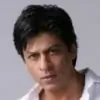

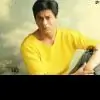




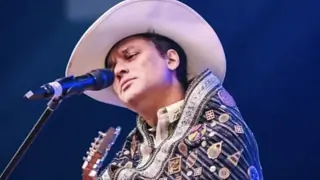
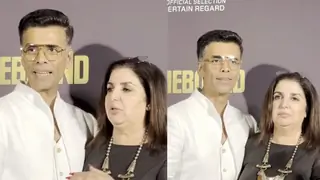




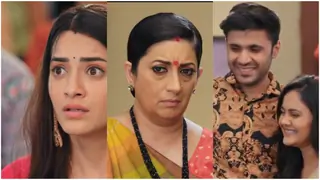
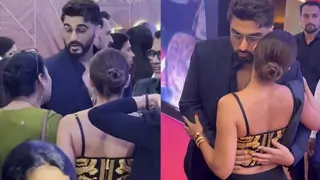




39